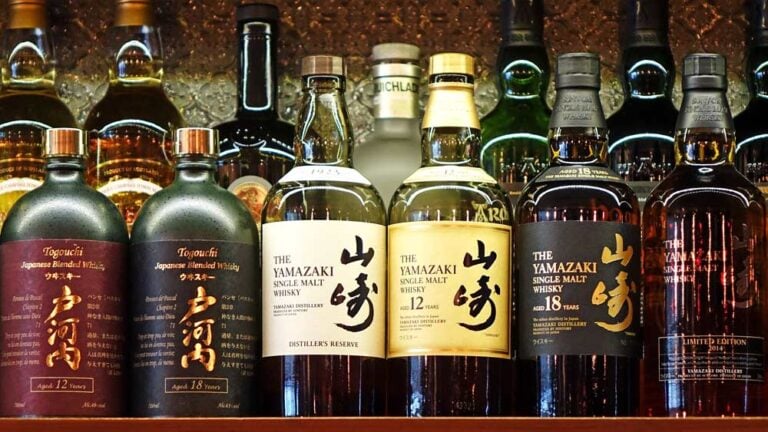
In my family, whisky has always held a significant place. Whether it’s soothing hot whiskies with orange slices and cloves when I was sick or enjoying lively family karaoke nights with a glass to ease sore throats, a bottle has always been on hand to meet our whisky needs. I’ve had a strong connection to whisky since the first time I first tried a glass when I was in Ireland at the age of 18.
So, when I arrived in Japan and discovered the abundance of whisky, I was overjoyed. As a young American girl far from home and experiencing separation from my family for the first time, finding something familiar like whisky readily available was truly a blessing.
However, as I delved into the whisky-drinking culture of Japan, I couldn’t help but wonder: Why is whisky so prevalent here? It’s a drink that originated in the British Isles and gained renown in Celtic cultures like Scotland and Ireland, yet it held such a prominent position in a culture on the opposite side of the world. Alongside traditional Japanese beverages like nihonshu and shochu, whisky appeared to be one of the most commonly enjoyed alcoholic beverages in your average Izakaya.
In this article, I’d like to delve into the history of Japanese whisky, exploring how it has gained prominence within Japanese culture, how whisky is made, and the differences in Japanese whisky.
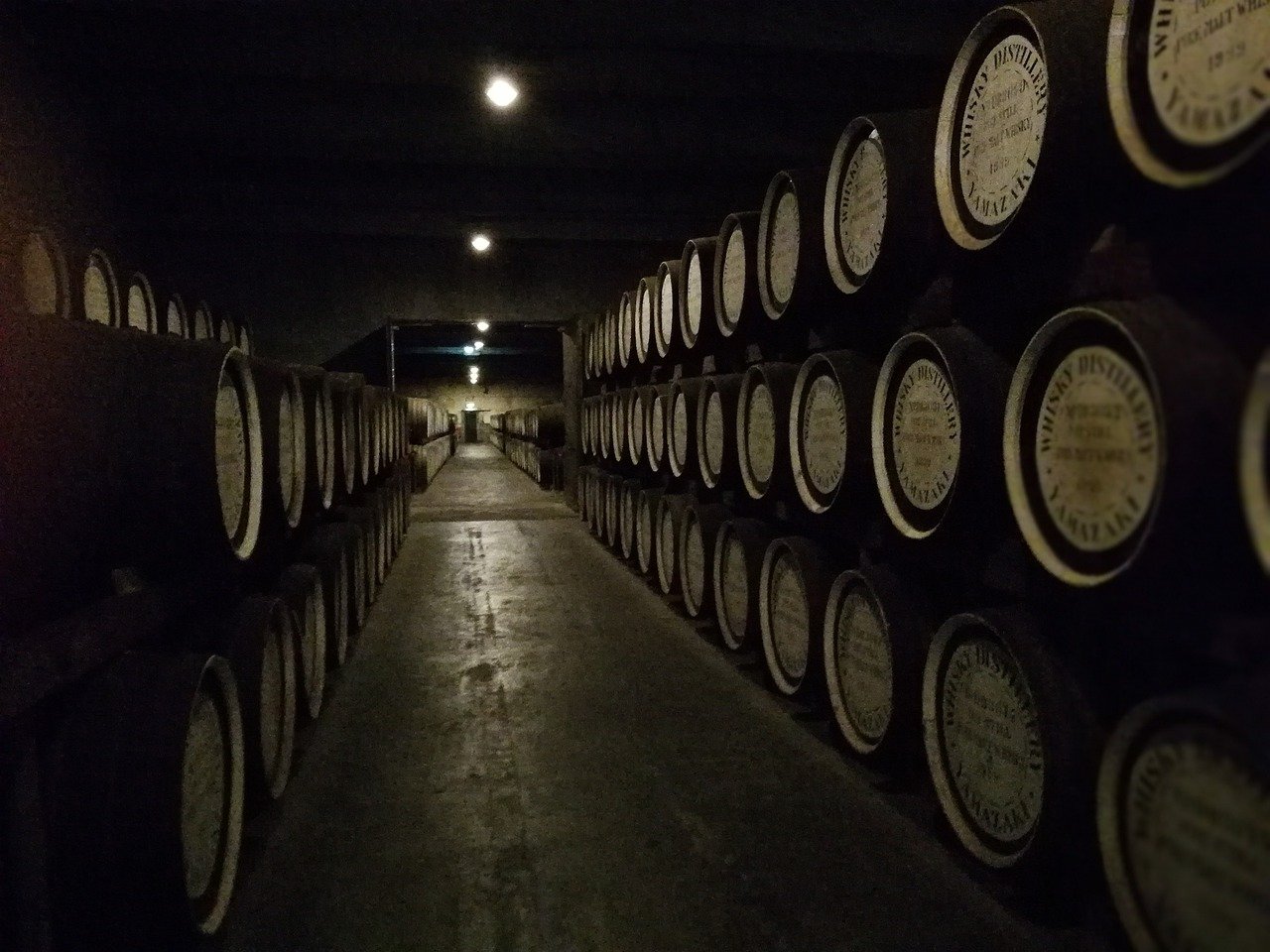
History of Japanese Whisky
Prior to 1853, Japan was in a period of isolation known as Sakoku, meaning “closed country.” Implemented by the Tokugawa shogunate from 1639 to 1853, this policy severely limited contact and trade with foreign nations, effectively isolating Japan from the rest of the world. Consequently, during this time, Japan experienced minimal foreign influences.
However, when the period of isolation ended in 1853, Japan embarked on a journey of embracing Western culture and technology, including adopting whisky-making techniques from Scotland, which greatly impacted the development of Japanese whisky. This led to the establishment of the Yamazaki Distillery in 1923 by Shinjiro Torii, the founder of Suntory.
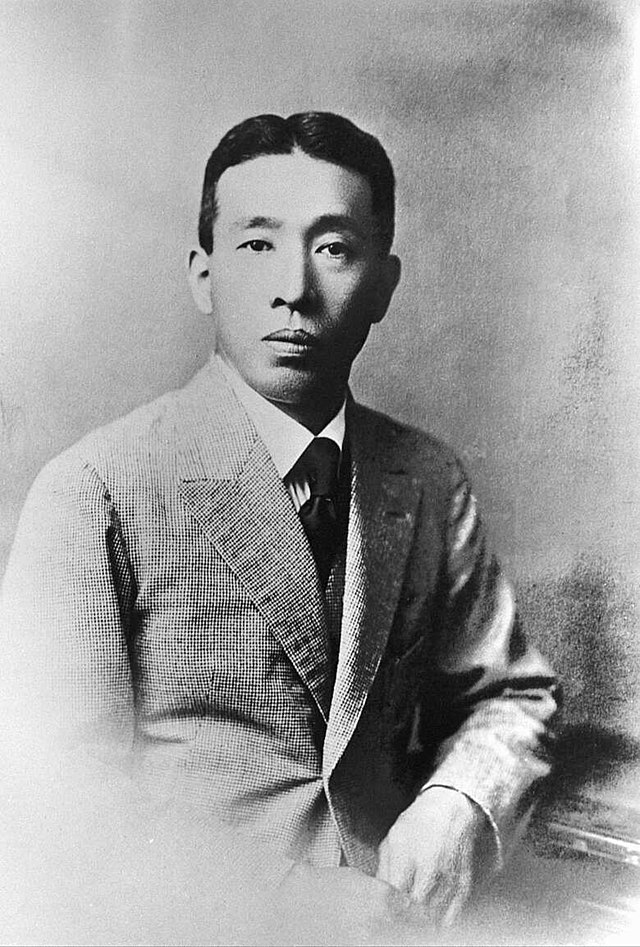
Shinjiro Torii circa 1946
Shinjiro Torii, born on March 3, 1899, in Osaka, Japan, hailed from a family involved in the wine business, which sparked his interest in the beverage industry. At age 20, Torii founded his own wine business in Osaka, initially named Torii Shoten. Starting with importing and distributing Western-style wines and spirits, Torii’s vision expanded beyond wine as he aspired to create a uniquely Japanese whisky. In 1923, he established the Yamazaki Distillery in Yamazaki, near Kyoto, recognized as the birthplace of Japanese whisky.
During his time, Torii collaborated with another significant figure in Japanese whisky history, Masataka Taketsuru. Born on January 10, 1894, in Takehara, Hiroshima Prefecture, Japan, Taketsuru came from a family involved in the sake-making industry, which sparked his fascination with fermentation and alcoholic beverages.
In 1918, Taketsuru embarked on a journey to Scotland to learn the art of whisky-making. Enrolling at the University of Glasgow, he gained practical experience at various Scottish distilleries, studying organic chemistry and the production techniques employed in Scottish whisky distilleries. Taketsuru met and married Rita Cowan, a Scottish woman who shared his passion for whisky during this time.
In 1920, Taketsuru returned to Japan armed with extensive knowledge and experience in whisky-making. Joining forces with Shinjiro Torii, the founder of Suntory, they established the Yamazaki Distillery in 1923. Taketsuru’s expertise and commitment to creating authentic Scottish-style whisky played a vital role in shaping the production methods utilized in Japanese distilleries. He emphasized the significance of high-quality ingredients, traditional pot stills, and oak cask aging.
However, in 1934, Taketsuru departed from Suntory to establish his own whisky company, Nikka Whisky. When choosing the town of Yoichi in Hokkaido as the site for his distillery, Taketsuru believed its climate and natural resources closely resembled Scotland’s. Continuing to expand Nikka Whisky, he opened additional distilleries in Japan, including the Miyagikyo Distillery in 1969. Taketsuru’s unwavering pursuit of quality and craftsmanship contributed to Nikka’s reputation as a distinguished whisky producer.
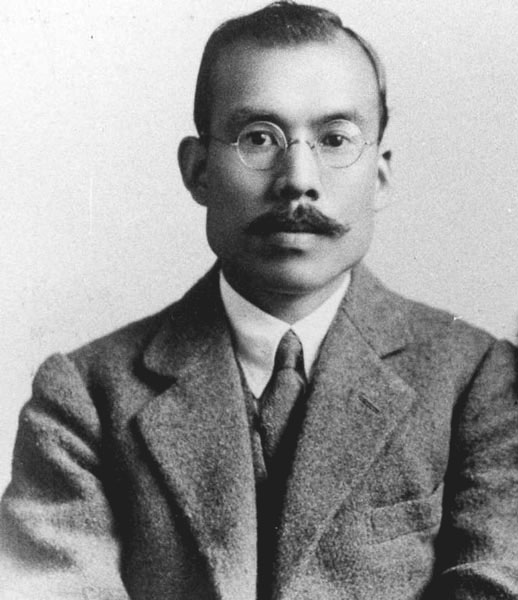
Masataka Taketsuru circa 1920
Japanese distillers faced numerous challenges in the early years, including limited access to suitable ingredients and a lack of experience in whisky production. Nevertheless, they persevered and gradually refined their methods. Throughout the 20th century, Japanese distilleries expanded their operations and developed a range of whisky styles, experimenting with different grains, yeast strains, and aging techniques to create distinct flavor profiles.
By the 2000s, Japanese whisky began to receive international recognition. In 2001, Nikka’s Yoichi 20-Year-Old won “Best of the Best” at the Whisky Magazine Awards, marking a significant milestone for Japanese whisky on the global stage. Japanese whisky experienced a surge in popularity worldwide, particularly in the 2010s. However, this surge led to a shortage of aged whisky due to increased demand and limited supply, posing challenges for distilleries in meeting consumer expectations.
Japanese whiskies consistently receive accolades at prestigious international whisky competitions, recognized for their craftsmanship, unique flavor profiles, and overall quality. These achievements solidify Japan’s reputation as a producer of world-class whisky.
How is Whisky Distilled?
While the history is interesting, you might ask yourself what it all means. Throughout history, many individuals have dedicated their lives to learning and mastering the process. However, unless you know how whisky is made, it can be challenging to appreciate the hard work they went through. So, let’s break down the distillation process for Japanese whisky.
Step 1: Malting
To kick things off, malted barley takes center stage. The barley gets a good soak in water, allowing it to germinate. But you don’t let it go all the way. The germination process is stopped by drying it with hot air. These enzymes convert starches into sugars that give the whisky various flavors.

Step 2: Mashing
Now that there is malted barley, it’s time to turn it into grist. Grist is just a fancy word for coarse flour. The grist is mixed with hot water in a mash tun to extract those sugars we worked so hard to activate. The mash mixture goes through a few rounds of heating and stirring. This helps those enzymes get busy converting the starches into sugars.
Step 3: Fermentation
Once the sugary liquid, called wort, is made, it’s time to let the yeast do its thing. Transferring the wort to fermentation vessels, next yeast is added. The yeast gets to work over the next few days, turning those sugars into alcohol. This process gives birth to a liquid called wash. Cheers to fermentation!
Step 4: Distillation
Now, it’s time for the real deal—distillation! There are two methods at play here:
Pot stills: Many Japanese whisky distilleries stick to tradition and use pot stills for the first round of distillation. The wash is heated up in pot stills, and the alcohol vaporizes and rises into the neck of the still. Then, it cools down and condenses, turning into a liquid known as low wine. It’s like capturing the spirit of the wash!
Column stills: Some distilleries like to kick things up a notch with a second round of distillation in column stills. Here the low wines are taken from the pot stills and heated up in a tall column. This fancy setup allows for multiple distillation stages, purifying and refining the spirit even more.
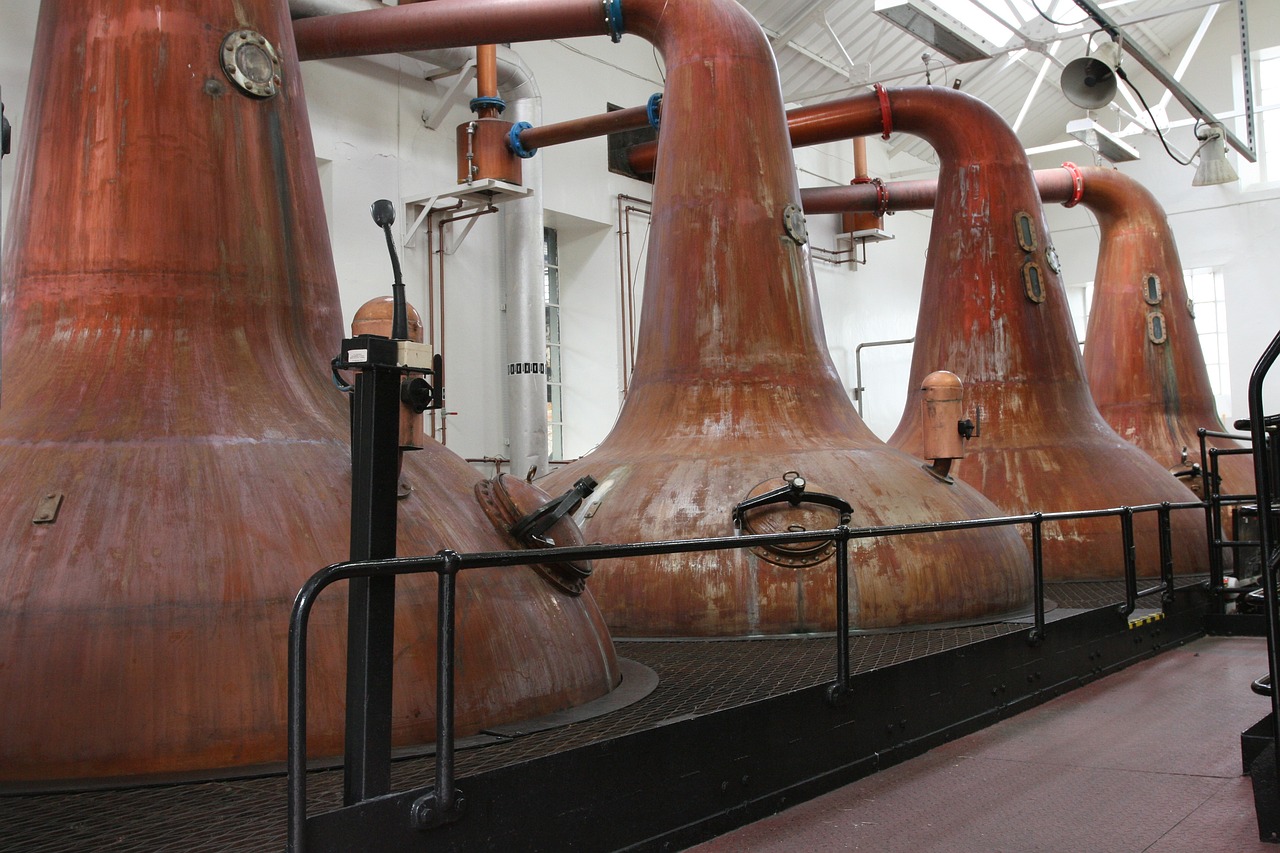
Step 5: Cut
During distillation, the distiller makes cuts to separate the various parts of the alcohol. This includes the heads, the hearts, and the tails. We’re not talking about anatomy here—it’s all about the flavors. Essentially, as the alcohol evaporates at a lower temperature than water, the first thing that leaves the wines is methanol. This is what is meant when talking about the heads. As the process continues, the next thing to leave the compound is the heart, and then the final part is the tails or a mix of fusel oils and other compounds. If the tail remains in the distillate, it will cause interactions within the barrel over time, resulting in unique flavors. Different sections of the distillate are purified at this stage, and the depth of the cut and the remaining hearts influence gives the batch of whisky its taste profile. A deep cut means the distiller is looking to use only hearts forming a pure whisky, although this can take out much complexity in aged whisky.
Step 6: Maturation
Once the distillation fun is over, it’s time to age the whisky. We transfer the new spirit, also known as the new make spirit, into wooden casks. This can include oak barrels, ex-bourbon barrels, and sherry casks. These casks become cozy homes for our whisky, where it matures and develops character over the years. For pure whisky, you may want the deep cut, as mentioned before, but here the cut can mature over time, creating the complexity of flavors famed in aged whisky. Patience is key here!
Step 7: Blending and Bottling
Now, comes the creative part! After maturation, if it’s a blended whisky, it might go through blending processes. This is where different casks and styles come together, like a whisky orchestra, to achieve the desired flavor profiles. Once the desired profile is found, it’s filtering time. The whisky may also be diluted to the desired alcohol strength before it’s finally bottled. Ready for sipping and sharing with the world!
What are popular whisky styles in Japan?
In Japan, both single malt and blended whiskies are highly regarded. However, for many non-whisky drinkers, you may ask, what is the difference?
Single malt whisky is made from malted barley and produced at a single distillery. It is distilled in pot stills and aged in oak barrels. Single malt whisky is known for its distinct flavor profile, which can vary based on factors like the type of barley, yeast, water, distillation process, and maturation period. It often exhibits rich and complex flavors, with malt, fruit, spice, and oak notes. Single malt whiskies are typically associated with specific distilleries, highlighting the unique characteristics of each producer. Whisky enthusiasts often appreciate them for their individuality and craftsmanship.
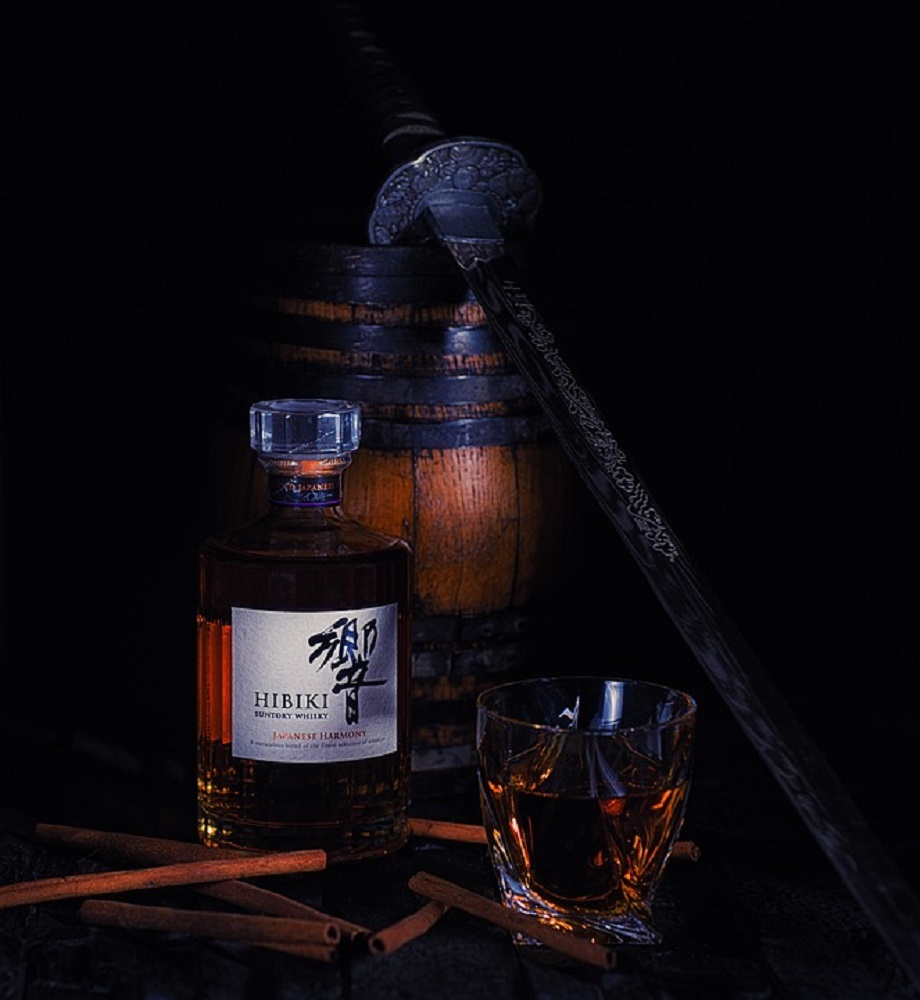
Image of Hibiki whisky, one of Suntory’s blended whiskies
On the other hand, blended whisky combines different types of whisky, including single malt, grain, and sometimes even corn or bourbon. The purpose of blending is to create a consistent and well-balanced flavor profile. Blended whisky often includes a high percentage of grain whisky, which is less expensive than malt whisky. Blended whiskies have a smoother and milder taste, making them approachable to many consumers. They are often used as a cocktail base but can also be enjoyed neat or on the rocks. Blended whiskies offer consistency in flavor from batch to batch due to the art of blending and the use of various components.
In addition to single malt and blended whiskies, a few other whisky-making methods and styles are employed in Japan. For example, although not as prevalent in Japan, grain whisky refers to whisky made primarily from grains other than malted barley, such as corn or wheat. In addition, you can find cask-strength whisky or whisky bottled directly from the barrel without dilution. This whisky tends to be limited releases in Japan as they often showcase the natural flavors and complexities derived from the aging process, appealing to whisky enthusiasts who prefer more intense and unadulterated expressions. Another form of whisky you may find is pure malt whisky, also known as vatted or blended malt whisky, which combines malt whiskies from different distilleries.
What are famous distilleries in Japan?
Japan is home to numerous distilleries, making it difficult to cover them all. However, some of the more famous ones include Yamazaki, Hakushu, Yoichi, and Miyagikyo. Of course, if you’re interested in learning about additional distilleries, there are many more beyond those mentioned here, so feel free to explore.
Yamazaki Distillery:
With a deep passion for creating Japanese Whisky that would cater to the refined taste of the Japanese people, Shinjiro Torii, the founder of Suntory, established the Yamazaki Distillery in 1923. This marked the birth of the first Whisky distillery in Japan.
Yamazaki, situated at the foot of Mt. Tenno in the southwest of Kyoto, was carefully chosen as the location for the distillery. Emphasizing the importance of “high-quality water” and a favorable “natural environment” in Whisky production, Yamazaki stood out among various potential sites.
Within the distillation room of Yamazaki Distillery, various distilleries of varied sizes and shapes are arranged to face each other. This assortment of distinct distilleries is quite rare worldwide. Each unique distillery size and shape contribute to the distinct characteristics of the original sakes they produce, resulting in a wide range of whisky styles, from light and delicate to profound and rich.
Hakushu Distillery:
Driven by a clear vision for a new type of malt Whisky to be produced at the Yamazaki Distillery, Suntory sought to discover pristine water ideal for Whisky-making. After exploring different regions across Japan, they stumbled upon the renowned water source “Hakushu.” Seizing the opportunity, Suntory established its second malt Whisky distillery, Hakushu Distillery, in 1973, exactly 50 years after the beginning of Japanese Whisky production.
What distinguishes Hakushu Distillery is its exceptional expertise in crafting a diverse array of original sakes, setting it apart globally. To achieve this, they prioritize using wooden vat fermenters with excellent heat insulation during fermentation. This meticulous approach yields a distinctive flavor profile uniquely Hakushu, influenced by microorganisms like lactic acid bacteria thriving within the distillery. In the distillation process, they employ various methods, including different sized and shaped distillation pots, allowing them to produce a wide variety of original sakes at each stage, from preparation and fermentation to distillation and maturation. Moreover, a range of barrels is employed during the maturation process, further enhancing the distinctive character of Hakushu whiskies.
Yoichi Distillery:
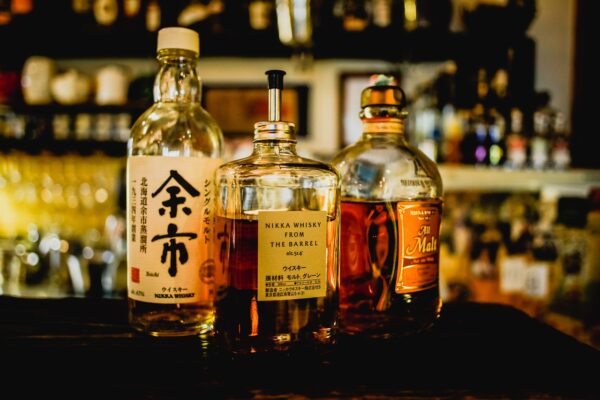
In 1936, Masataka Taketsuru, often referred to as the father of Japanese Whisky and the founder of Nikka Whisky, established Yoichi Distillery with a profound aspiration to create his own Whisky-making haven.
Taketsuru believed that specific elements were vital for producing exceptional Whisky: a cool and humid climate reminiscent of Scotland, abundant water sources, and a tranquil and pristine environment. Guided by these criteria, he meticulously handpicked Yoichi as the perfect location for his distillery. Yoichi is nestled in the western region of Otaru, at the base of the scenic Shakotan Peninsula. Ever since then, Yoishi Distillery is regarded as the birthplace of Nikka Whisky.
Miyagikyo Distillery:
Approximately three decades have passed since Masataka Taketsuru established the initial distillery in Yoichi, Hokkaido. Taketsuru, who believed that blending multiple original sakes produced in different distilleries adds richness and flavor to Whisky, embarked on a search for a new location to construct a distillery.
Located near the prefectural border with Yamagata, this area is a verdant gorge blessed with two clear streams: the Hirose River and the Shinkawa River. During Taketsuru’s first visit to this place, he savored the black Nikka Whisky by immersing it in the pristine waters of the Shinkawa River, evaluating its taste. It is said that this experience led him to decide to construct a distillery right there on the spot.
Visiting a Distillery
As you can see, Japanese whisky has gained significant prominence within Japanese culture. Shinjiro Torii and Masataka Taketsuru played pivotal roles in developing Japanese whisky and establishing the Yamazaki and Nikka distilleries.
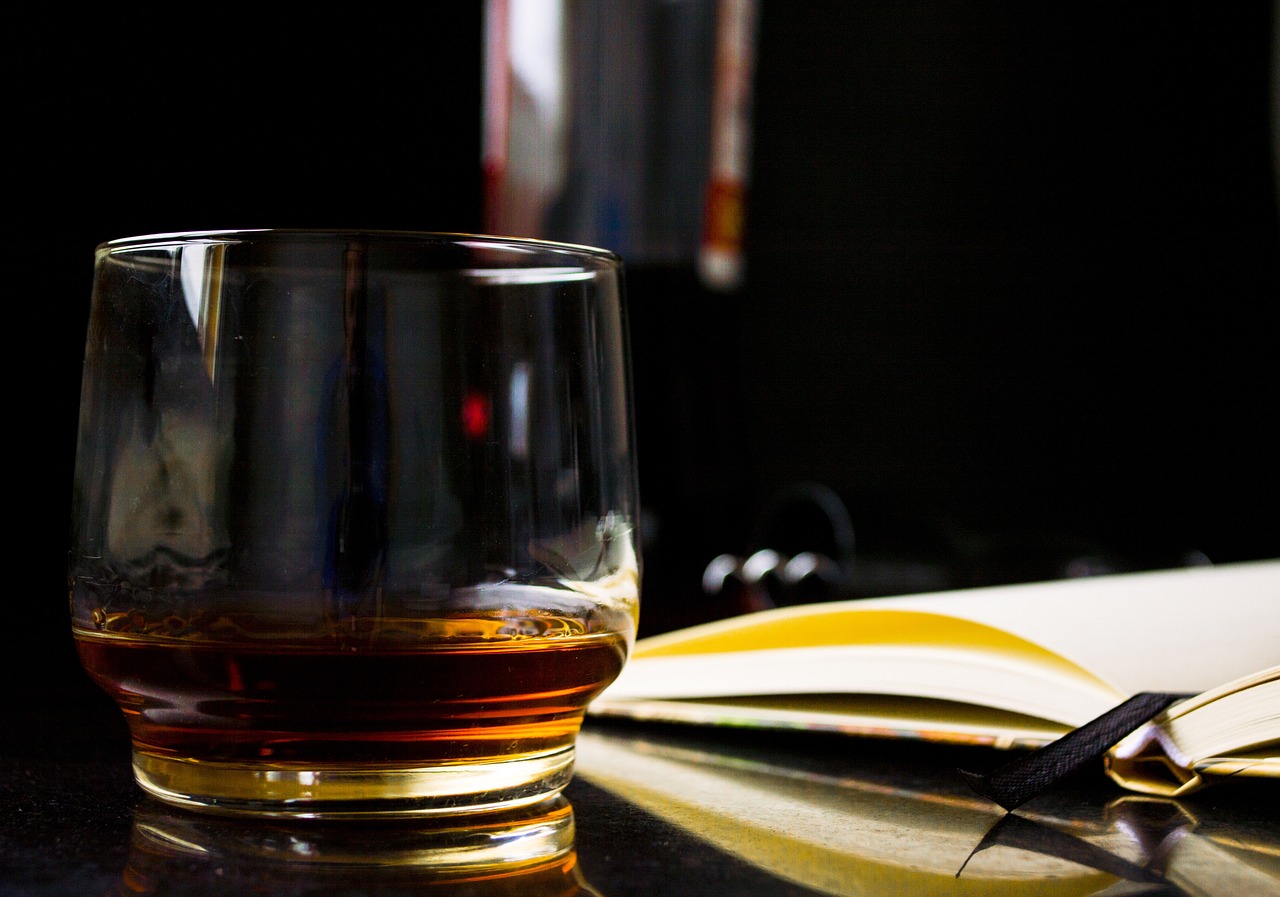
However, the variety of Japanese whisky and distilleries has boomed over time, refining methods and experimenting with different grains, yeast strains, and aging techniques to create distinct flavor profiles. Japanese whisky received international recognition in the 2000s and has continued to gain popularity worldwide. Japanese whisky has firmly established itself as a producer of world-class whisky, with its craftsmanship, unique flavor profiles, and overall quality consistently recognized in international whisky competitions.
If you enjoyed learning about whisky, you could visit a distillery and see the process up close. Here you will be able to watch the burning of peat, learn about the brewing methods and get the chance to sample a variety of delicious whiskies. On most distillery websites, you can schedule a visit, so once you find a whisky you like, perhaps visit a distillery for a tour to see the entire process up close!
For further whisky-related readings:













